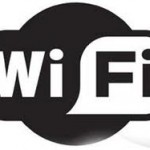Summary: Wi-Fi offers cheaper network rollout option for Indian Telcos, especially for data hungry subscribers. Given that DoT has rejected TRAI’s all recommendation on making available more spectrum for Telcos, during next year auctions, the utilization of ubiquitous ISM (2.4 GHz) and UNII (5 GHz) combined 600 MHz of ‘Open Spectrum’ would be in-focus again. Albeit with certain challenges, India is likely to see exponential growth in Wi-Fi users and public hotspots deployments across all major cities.
India has only 30,000 commercial Wi-Fi hotspots at the moment, and virtually no community (Public) hotspots. But by 2018, commercial Wi-Fi would see moderate growth; community hotspot would scale beyond 2 million in number. Globally, the number of hotspots will cross 300 million marks by 2018, from present 47 million, clocking 1000{af589cdba9d77786c8c861317dbad60bba1e2ebbf56e2ffab874a1b59fde9ce3} growth, while during same period, Indian Wi-Fi market would grow 7000{af589cdba9d77786c8c861317dbad60bba1e2ebbf56e2ffab874a1b59fde9ce3}– 7 x faster than global Wi-Fi market. It simply means there will be 1 Wi-Fi hotspot for every 20 people by 2018 across globe. This has been predicted by Maravedis Rethink Analytics with iPass, which can be available to visualize here.
At present, as per iPass, there are only 30 municipalities in India with Wi-Fi hotspots and 105 Airports offering Wi-Fi services. By 2018, around 400 municipalities would deploy Wi-Fi hotspots, while only 110 Airports would offer Wi-Fi. Interestingly, Wi-Fi would also be offered on planes and trains, which is something yet to pick up in India vis-a-vis other countries.
But why would India see so much growth in ‘Community Wi-Fi’ only?
Two reasons come to my mind. Thrust and interest of Modi led government in creating ‘Smart Cities’ would push Wi-Fi market up for next couple of years.
Secondly, very aggressive Wi-Fi deployment by Telecom Operators, to offload rising ‘Data uptake’, in cost-effective way; especially given spectrum availability in India and DoT’s inability to vacate additional defense spectrum for use for commercial cellular network deployment.
Wi-Fi is really on the move in India. Look at how Telcos in India are aggressively deploying Wi-Fi. For example-Bharti Airtel, which has probably the highest number of Wi-Fi hotspot deployed among all Telcos. Recently, Airtel has deployed first Smart City Wi-Fi project at Hyderabad, followed by Bengal Transport Wi-Fi. Airtel has also been rolling out public hotspot in Bengaluru for past couple of years with Ruckus Wireless.
Other Telco are not far behind. MTS, the joint venture between Sistema Tele and Shyam Telecom, has been instrumental in rolling out India’s first Metro Wi-Fi project in May-2014. Idea Cellular, the third largest telecom operator by market share, has soft launched its residential Wi-Fi project in couple of metros last year. Tata DoCoMo, the data driven Telco, has been quite aggressive in acquiring ‘Airports’ and deploying Wi-Fi. Vodafone, latest entrant, has reportedly created a ‘SPV’, to drive Wi-Fi acquisitions and deployments, especially at public places.
State run Telcos, MTNL and BSNL aren’t behind either. MTNL has reportedly floated an RFP to rollout Wi-Fi at NDMC arena last month, while BSNL is charting out NFON rollout and connecting villages on Wi-Fi already.
The list is exhaustive of course. Just to note- these all above deployments happened in past two years span.
But how do these Telco monetize Wi-Fi?
That’s the real question to look forward to answer. There’s no straightforward answer to making money out of public Wi-Fi deployments. There are some solutions put forward, which includes location based advertising (customer location identification and targeting customers with marketing offers based on location) and customer analytics based marketing or providing value add services. There is growing interest on managed hotspots solutions as well, and major OEMs are offering Wi-Fi value adds in either of the above forms.
At the moment, there’s long way to go to monetize public Wi-Fi deployments. There are some Telco who are clear of their goal of monetizing Wi-Fi Network, but it just can’t be only objective. Seamless integration of Wi-Fi and Cellular would not only help Telco to aggressively roll out Wi-Fi services, but also in offloading the data via Wi-Fi network. As Telco are carefully evaluating next network deployment for mobile broadband, chances are rare that they could skip Wi-Fi route. Wi-Fi networks would remain the part of Telco rollout, along with 4G-LTE and HSPA till 2018, and as stated at the start, major driver for this would be spectrum crunch or economically unaffordable price of available spectrum. Wi-Fi network offers better alternative.


